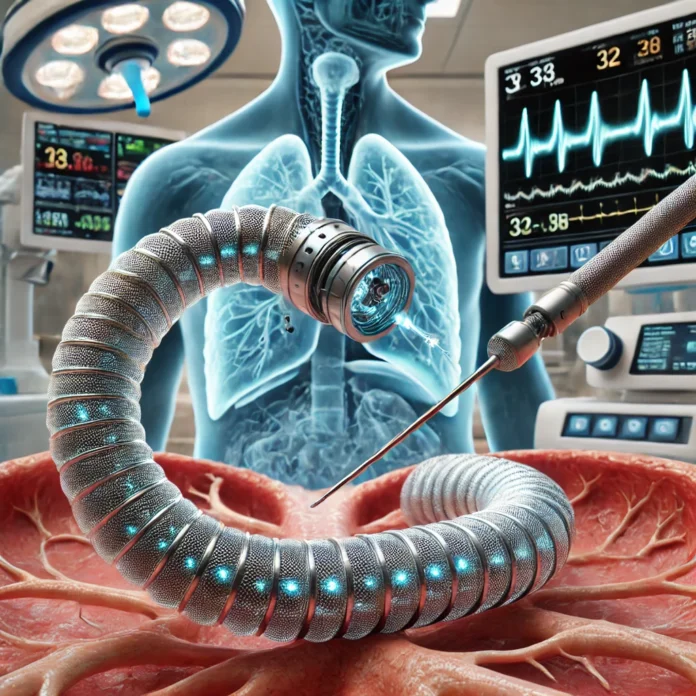Researchers Develop ‘Magnetic Vine Robots’ to Transform Cancer Treatment
Introduction
In a groundbreaking development, researchers from the University of Leeds and the University of California San Diego have created ‘magnetic vine robots’ designed to navigate the human body and target tumors directly. This innovative approach aims to significantly enhance the precision and efficacy of cancer treatments, particularly for lung cancer, which accounts for approximately two million diagnoses and 1.8 million deaths globally each year.
The Innovation of Magnetic Vine Robots
Magnetic vine robots are inspired by the natural growth patterns of vine plants, allowing them to grow and navigate through the body’s complex pathways. These robots use pneumatic pressure to expand and magnetics to steer, enabling them to squeeze through gaps almost 40% thinner than their resting diameter. This unique capability allows the robots to reach otherwise inaccessible areas within the human body, such as the bronchial tubes of the lungs.
By magnetizing their skin with millions of micro-particles, these robots can be controlled using external magnets, allowing them to change shape and direction effortlessly. This method ensures that the robots remain soft and flexible, minimizing discomfort and potential tissue damage during medical procedures (PharmaTimes) (Digital Health).
Applications in Cancer Treatment
The primary application of these magnetic vine robots is in the diagnosis and treatment of lung cancer. Traditional bronchoscopy methods often struggle to reach deep into the lungs, limiting the ability to detect and treat tumors early. The magnetic vine robots, however, can navigate these narrow pathways with ease, offering a less invasive and more precise alternative.
Once at the target location, the robots can perform biopsies or deliver targeted treatments. This capability could lead to better treatment outcomes by allowing for earlier detection and more localized treatment of tumors, reducing the need for invasive surgeries that often result in significant tissue removal and long recovery times (Engineering and Phys Sci).
Advantages Over Traditional Methods
The advantages of magnetic vine robots over traditional cancer treatment methods are numerous:
- Minimized Tissue Damage: By navigating the body’s pathways without creating friction, these robots significantly reduce the risk of damaging surrounding tissues.
- Increased Reach: The ability to squeeze through tight spaces allows these robots to access areas that traditional tools cannot, providing a more comprehensive diagnostic and treatment capability.
- Enhanced Precision: The external magnetic control system allows for precise navigation and targeting, ensuring that treatments are delivered exactly where needed.
- Reduced Invasiveness: The soft, flexible nature of the robots means they can perform their functions with minimal discomfort to the patient, making procedures less traumatic and recovery times shorter (PharmaTimes) (University of Leeds).
Future Implications and Research
The development of magnetic vine robots represents a significant advancement in the field of medical robotics and cancer treatment. Researchers are optimistic about the potential of these robots to revolutionize how cancers, particularly lung cancer, are diagnosed and treated. Pre-clinical trials are underway, with the aim of moving to human trials in the near future (University of Leeds) (Engineering and Phys Sci).
In addition to lung cancer, there is potential for these robots to be adapted for use in other types of cancer and medical conditions that require precise navigation and treatment within the body. The ongoing research and development efforts will focus on refining the technology, improving its capabilities, and exploring new applications in the medical field (Digital Health) (Engineering and Phys Sci).
Conclusion
Magnetic vine robots are poised to transform the landscape of cancer treatment by offering a less invasive, more precise, and highly effective alternative to traditional methods. This innovative technology not only has the potential to improve patient outcomes but also to significantly reduce the burden on healthcare systems by making procedures more efficient and reducing recovery times. As research progresses, the hope is that these robots will become a standard tool in the fight against cancer, providing new hope for millions of patients worldwide.
